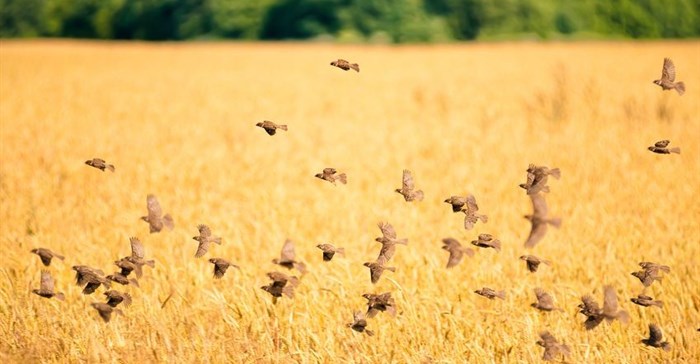
Related
Top stories


Marketing & MediaCammy Msimango on finding her footing in South Africa’s fast-moving digital newsroom
Esther Tomorrow, MDNTV 19 hours




More news




Over the past ten years, there has been a significant increase in the hectares being planted at Welgevallen Experimental Farm as part of breeding trials of the plant breeding laboratory (PBL). These efforts form part of contract research being conducted in support of the local wheat industry.
Covering our trials with nets became an almost impossible task and too expensive. The netting also made the use of newer phenotyping platforms, i.e. drones, impossible.
The PBL, therefore, had to rethink our defense mechanisms and started exploring different deterrents. With a school on the one side and a residential area on the other, options are, however, significantly limited. In 2015, following extensive research on possible deterrents, we made contact with Eagle Eye Bird Control and got hold of a high-powered handheld laser. The laser was extremely effective in chasing away unwanted birds but needed a human operator. We realised later that this was not a sustainable long-term solution.
Fast forward to the 2017 season. Following the extensive search in regard to bird laser deterrents, “Professor Google” forwarded an alert in 2015 for a new product. It was for the autonomic bird repelling laser from a Dutch-based company called Bird Control Group (BCG). We made contact and in May 2017 a demonstration unit was imported and installed at WEF. This was the first time the technology was deployed in South Africa.
The unit consists of a high-powered, class 3B, green laser that is housed in a watertight casing, similar to that of a security camera. The laser’s path can be programmed and is completely adaptable to the user’s requirements. The unit can, therefore, autonomously cover the pre-determined area 24/7 without any human intervention apart from the initial programming.
Yes. This season we have suffered almost no damage in the areas covered by the laser beam thus far.
How does it work? The birds identify the laser’s beam as a physical threat and flee from it. In most cases, our experience is that once it flees it will not return. The autonomic laser is also extensively used in other areas of the world, at airports and industries prone to bird damage. The versatility of the technology is further illustrated with the Seabird saver laser system that was developed in partnership with the World Wildlife Fund.
The laser is generally regarded as safe and fitted with BCG’s patented Projection Safety System (PSS) that blocks the laser from shining outside the programmed area. This keeps birds away without harming them while not impacting the environment or impacting WEF’s neighbours, thereby providing a high-tech, innovative solution for a low-tech problem. – Stellenbosch University

AgriOrbit is a product of Centurion-based agricultural magazine publisher Plaas Media. Plaas Media is an independent agricultural media house. It is the only South African agricultural media house to offer a true 360-degree media offering to role-players in agriculture. Its entire portfolio is based on sound content of a scientific and semi-scientific nature.
Go to: http://agriorbit.com/